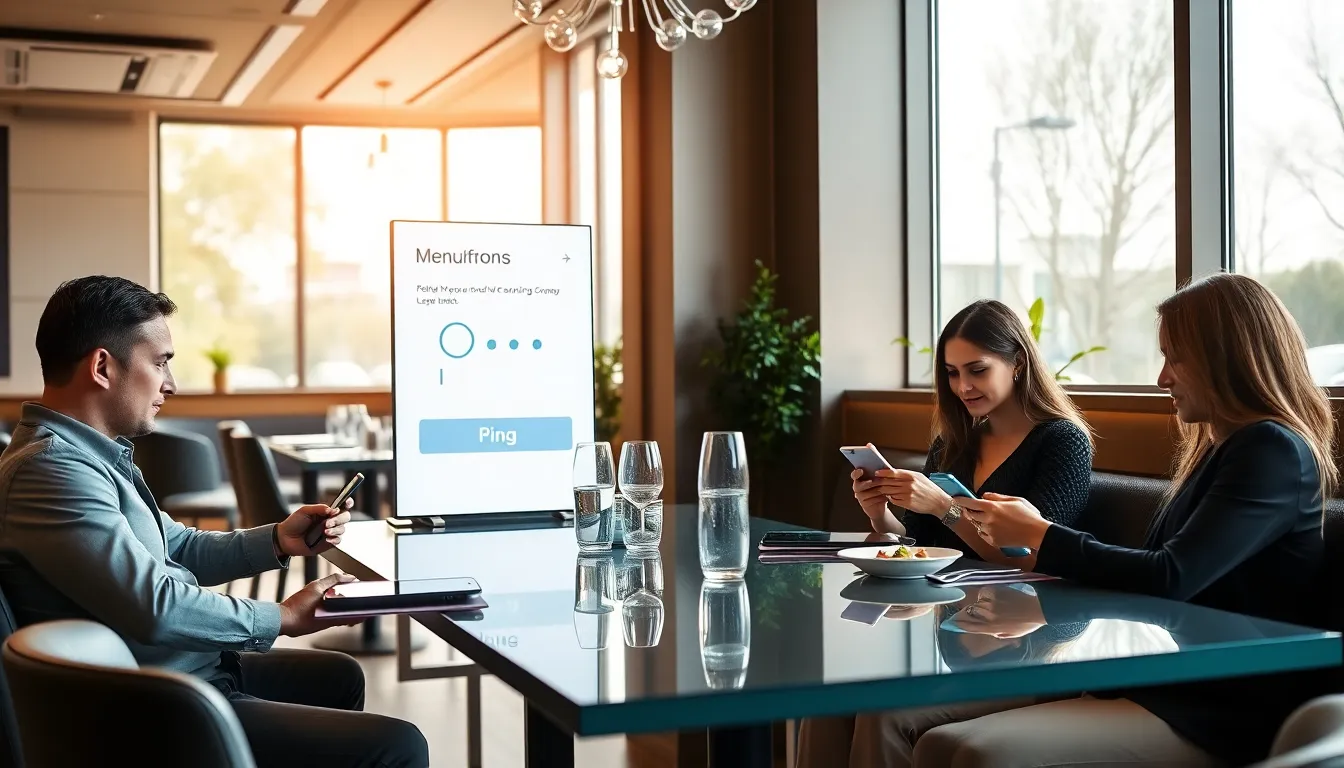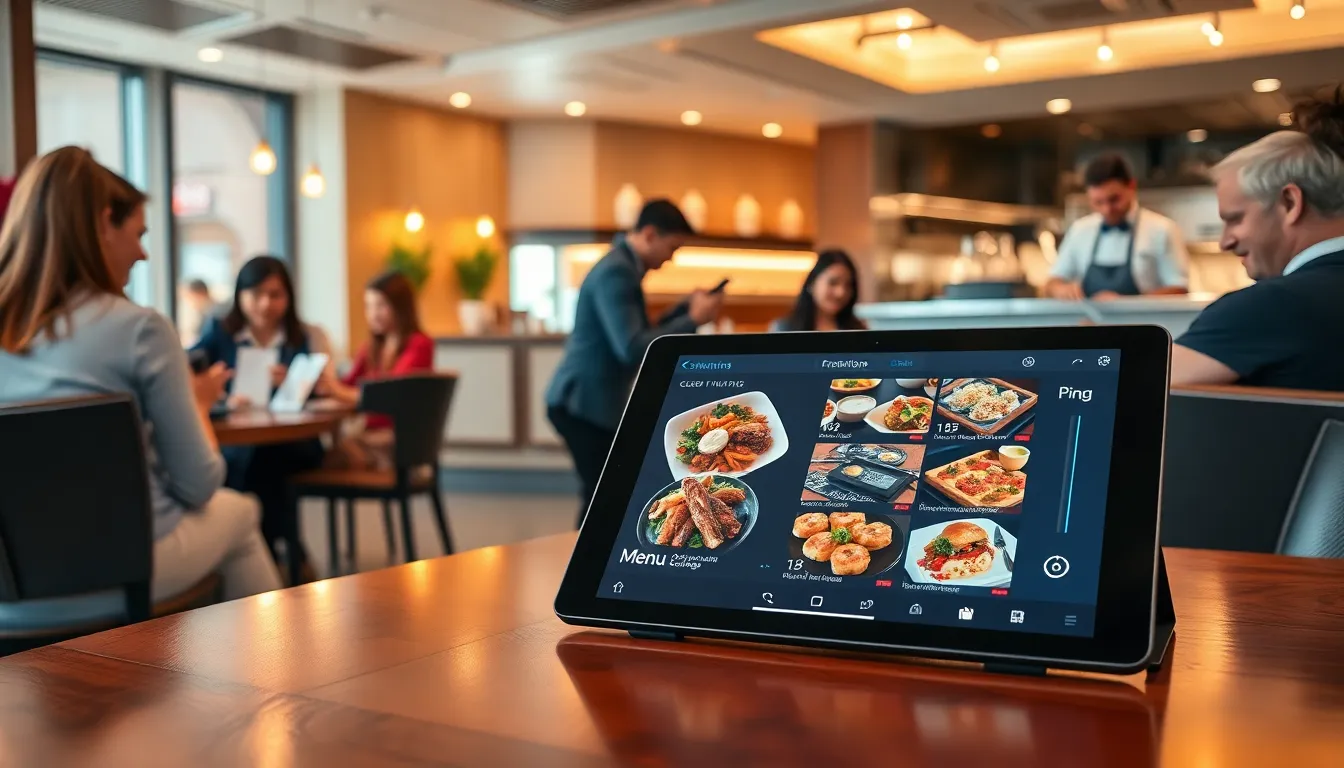Imagine walking into your favorite restaurant, flipping open the menu, and instead of being bombarded with the usual items, you find a smart solution that enhances how you order and enjoy your meal. Sounds futuristic, right? Well, enter ‘ping’, an innovative concept that’s not just for tech enthusiasts anymore. It’s making waves in restaurant menus everywhere. Let’s jump into what ping is and how it can transform your dining experience with just a little bit of tech-savvy magic.
Table of Contents
ToggleUnderstanding Ping: The Concept and Its Origin

To grasp the full potential of ping in restaurant menus, it’s essential to first look at its origins. Originally, ‘ping’ referred to a network utility used in computer networking to test if a server is reachable. Over time, the term evolved. Now, it symbolizes interactive communication, something many chefs and restaurant owners have decided to harness for the dining industry.
This technology allows menus to connect with customers through various devices, providing a seamless ordering experience. It’s akin to having a helpful waiter in your pocket. Through integration with smartphones and tablets, diners can receive instant feedback, special offers, or even their order status as they wait.
Understanding this evolution makes it clear why ping is becoming a crucial aspect of modern dining.
How Ping Is Used in Restaurant Menus
Incorporating ping within restaurant menus has opened a floodgate of exciting possibilities. Here’s how it can optimize your dining experience:
The Benefits of Incorporating Ping into Your Menu
Firstly, let’s talk about the versatility it brings. With ping, the menu can dynamically update based on ingredient availability or changing specials, allowing restaurants to serve only the freshest options. Imagine a guest walking in on a Tuesday for taco night and finding that tacos are not just fantastic but available with a special might-have-been-missed sauce because of a last-minute shipment.
Enhancing Customer Experience
Ping also significantly enhances customer experience. Diners can place orders directly from their devices, reducing wait times and enabling them to explore their culinary options at their own pace. With detailed descriptions and pictures right at their fingertips, each decision becomes more informed and enjoyable.
Streamlining Order Management
From the kitchen’s perspective, these pings streamline order management. With fewer human errors, staff can focus more on preparing fantastic meals rather than juggling orders. Ideal, right? When the orders come in perfectly timed and accurately, the entire restaurant functions better.
Best Practices for Using Ping on Menus
Implementing ping on menus involves more than just slapping a QR code onto a piece of paper. Here’s how to do it right:
- User-Friendly Design: A clear layout is essential. If users can’t navigate the digital menu easily, they may abandon it altogether. Think of intuitive swipe gestures or touch buttons that look familiar.
- Training Staff: Knowledgeable staff can help bridge technology gaps. They should be well-versed in how to assist diners with the ping systems, ensuring guests don’t feel lost.
- Test and Iterate: After rolling it out, regularly collect feedback to refine the system. Iterate based on common challenges faced by diners and staff alike. A little proactive tweaking can go a long way.
Examples of Successful Implementation
Several restaurants have successfully embraced ping technology, creating standout dining experiences.
- Techy Tacos: This eatery employs a ping system that lets diners customize their orders before they even step in the door, totally revolutionary. Their repeat customers love the ability to personalize each visit without feeling rushed.
- Pizza on Demand: This establishment has integrated live order tracking. Patrons can see their meal being prepared in real-time, providing a thrill to the pizza-loving crowd.
- Cafe Connectivity: A cozy local cafe has added a feature allowing customers to reserve tables via their pings. Not only does this optimize seating but also leads to a delightful, stress-free experience.
Future Trends in Restaurant Menus Featuring Ping
As technology continues to evolve, so will the possibilities for restaurant menus featuring ping. Expect more personalized recommendations based on past orders, dietary preferences, or even local seasonality. Future trends include enhanced integration with AI, allowing the menu to learn what customers tend to order.



